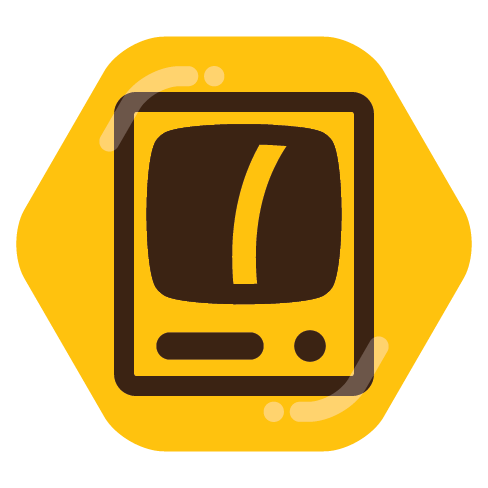*or distribution
Having been a (GNU-)Linux user since 2006 (desktop only), I have done what many Linux users have also done: hop around from one thing to another.
That all stopped a few years ago when I decided that I would just stick with Debian. I was happy and comfortable. It worked. I used Stable, Testing, Unstable… no issues.
That is until about 4 months ago I was cleaning and found an older laptop and decided to try something different on it: Alpine Linux.
I even wrote about it on my blog. It was such a nice installation and process that I decided to put it on my main personal laptop.
Since April I have been using Alpine and I must say I am pleased. Differences from one Linux to the next aren’t much to write about. With Alpine however, I finally experienced another part of Linux that I hadn’t had the opportunity to enjoy: the community.
Package requesting? Easy. Asking for help? No shame. Patience and help provided? Excellent.
None of those comments are to disparage other OS communities. It is simply that I had only ever used popular distros (Debian- and Arch-based) so I never needed to ask for help. Either way, I am still using Alpine.
So, just to repeat the titular question: what have you tried out this year? What are your impressions?
I feel like I’m the only one who doesn’t consider different Linux distros to be different OSes. I was expecting to read people trying out Haiku, ReactOS, Solaris, any of the *BSDs, or something I’ve never heard of.
If you want something obscure barely anyone heard about try eComStation. Unfortunately you’ll have to pirate it, but its really easy to find.
If you’re not the pirating type, you can buy a license for ArcaOS to get something still supported.
It’s a bit pricey though.
it’s 130 bucks for a kinda useless, novelty OS.
Wow, I am definitely getting old if OS/2 is “obscure”
That’s a good find. I’d never heard of it. I always thought OS/2 was pretty great, although I only got to mess around with it a few decades again. Looking up eComStation led me to ArcaOS, which seems like a more updated eComStation. OS/2, Amiga, BeOS and NeXT should have been more popular.
I think MorphOS is considered the up to date Amiga.
For BeOS, Haiku is pretty great.
ArcaOS is literally OS/2.
There is no modern NeXT OS but there is a recent DE effort if all you want is the user experience.
I mean even Solaris and the BSDs are just different flavors of Unix
… and Linux is not Unix. BSD and Solaris are, in my opinion, much better than any Linux. The problem is that BSD suffers from hardware incompatibility, and there are very few application programs for the current Solaris.
Good point. I should have worded my question differently.
You are not the only one. Haiku is getting close to daily driver capability.
You cannot practically use it on real hardware yet but one to watch is SaerenityOS.
It is unfinished enough to be a pipe dream but RavynOS is cool.
I am not sure there is anything outside the POSIX space that is really usable as a desktop on current hardware.
I remember how much I loved using Solaris in the 1990s in the computer lab at college. People still use Solaris? I never saw something as elegant and intuitive as Solaris in those old days.
OpenSUSE Tumbleweed because i really like that its rolling release, new software and stable. Im using it as a main distro now. It has everything i need.
OpenSUSE is one of the distros that I have never tried. If Alpine ever fails me, I think I’ll give it a try.
I distro hopped a lot and i always had a reason to switch. With OpenSUSE i still didnt find a reason.
I’m usually an Arch person (btw) but I’ve been playing around with NixOS in a VM and I’m tempted to try daily driving it…
I was tempted to give NixOS a try as well. It seems to be highly recommended on the fediverse.
It seems like a pretty wild idea and I’m only just starting to wrap my head around it, but it’s really interesting as well!
Well, I’ll put it this way:
I’ve been away from Linux for a few years (several reasons), but this year I heard of NixOS and decided to give it a try, and I had a blast playing around with it. With how easy* and quick to configure it is, and how stable it also is, it encouraged to tinker with it more than I ever have with Linux, and I never had any really frustrating issues like I had with some other distros that I barely tinkered with.
At the very least, I think you should play around with it for a while just to see if it’s something you like.
*PS: For anyone who does not have experience with Linux, NixOS is probably not a good first distro. I meant easy more so for people already familiar with Linux.
I’ve been daily driving it on my personal projects computer. The biggest issue for me is the promise of the project shell stops just before the application config files, meaning that you still have a shared environment for projects using the same software.
The idea for me was to have all my projects create their development environment and associated tools so that moving to a different instance was easy. Unfortunately VSCode doesn’t install extensions in the project nor does it understand which to enable/disable based on inputs.
I finally got fed up with Windows 11 when an update broke itself during an update. Apparently it was a pretty widespread issue. Defender got disabled because the update renamed several files.
I moved to PopOS and have been happy ever since. I couldn’t believe that almost everything on my Lenovo Flex 5 just worked, including the touchscreen, pen, and 360 degree hinge. The only thing that doesn’t work is the finger print sensor apparently due to lack of available drivers.
I really like how modern PopOS feels.
I’m in a similar boat although PopOS has been problematic for some gaming that was fine on Ubuntu (until an nVidia update broke the entire system).
opensuse kalpa - the KDE version of its immutable desktop. Pretty neat combination of rolling core and applications separated out primarily into flatpak and other containers.
GrapheneOS and Arch Linux. Both amazing. I’m staying indefinitely.
I gotta get into Arch someday. How’s your experience so far? Easy to use? (I’m sure it is, the wiki is very detailed) Glad to see you like GOS
I’m not particularly militant about Linux distros, but Alpine is one distro I disapprove of in particular. The reason is that it isn’t GNU/Linux – it strips out (copyleft) GNU libc and coreutils and replaces them with permissively-licensed alternatives. I think that (whether intentional or not) it caters too much to corporate interests that exploit “open source” without truly respecting the users’ freedom, and therefore its popularity is potentially harmful to the Free Software movement in the long run.
But alpine license isn’t that bad right? I mean musl is okaish?
Can you elaborate more?
Thank you
Considered in and of themselves, permissive licenses are “fine.” They confer all four of the freedoms the FSF lists here, so there’s nothing wrong with them from the perspective of the person receiving the code as an end-user.
The problem is that, unlike copyleft, they fail to bind that recipient to the same conditions and guarantee those freedoms will be maintained for all downstream users who receive the code in the future. They are thus exploitable by those who would take without giving back in return. This makes permissively-licensed code popular with the exploiters, but is bad for the users in the long run.
See, for example, MacOS and iOS: in theory, they’re just BSDs with fancy proprietary UIs, but in practice they can be made so locked-down and user-hostile there’s an entire movement devoted to creating new laws to force Apple to stop bricking people’s property because they needed to replace a bad hardware component. Those four freedoms I referenced earlier are definitely no longer being upheld by Apple, even though Apple itself benefited from them to make the software in the first place.
There’s a reason why copyleft-licensed Linux is so much more popular than permissively-licensed BSD, and resistance to selfish bad actors (even as flawed as it is, what with the “tivoization” exploit of the GPLv2 and all) fragmenting the community with proprietary features is undoubtedly part of it.
There are some opinions mascaraing as fact here and some not very evidence driven at that.
Linux is a beneficiary of great timing. The pre-cursor to FreeBSD, BSD 386, already existed and was much more mature when Linux appeared. The reason that Linux became popular was primarily that AT&T launched a lawsuit against BSD which made its legal status questionable during a critical few years. This was at the dawn of the Internet and the distribution and collaboration that enabled. By the time the lawsuit was resolved, Linux was massively more popular and BSD was left behind. Ironically, early Linux never faced early legal trouble as it was not taken seriously by UNIX players. The Linux lawsuits came later but, by then, Linux had major corporate backers ( see SCO vs IBM with IBM being the on the Linux side ).
Hell, Linus himself has said that he would never even have created Linux is Minix had been free ( meaning explicitly free as in beer, not as in freedom at the time ). In fact, Linus did not want to adopt the GPL at first because it allowed charging for the software.
One reason that Linux was able to advance so quickly ( or exist at all ) was the existence of GNU and especially GCC. I hate the amount of credit GNU tries to take for moderns Linux distros but there is no denying its importance in making Linux viable early on.
Today, Linux succeeds over BSD primarily because of the greater corporate interest. Apple does not really use the BSD kernel either.
These days, the most popular license used in typical Linux installs is MIT and permissively licensed software is more common than GPL. Some MIT communities, like the X Window Project, are decades old and represent strong trends away from corporate dominance and exploration over time. The vibrancy of all the Open Source communities cannot be explained in terms of the world-view expressed in the comment above. I do not have the numbers in front of me to support this but it is my own impression that permissively licensed software generally succeeds more often at creating sustainable communities. Or maybe it is just the FSF. While there are many successful GPL programs, fewer than 500 of them are GNU and there are almost as many abandoned GNU projects as there are active ones.
In my view, the most important GNU program by far is GCC. That evil Apple company you cite created LLVM / Clang and licensed it permissively. They did by far the most work on it and yet have it away. Today, other evil companies like Microsoft contribute to Clang / LLVM as well. LLVM is of course the basis for the Rust language, another corporate contribution. The lack of GPL here does not seem to have prevented any of this innovation, the massive contributions to the community, or collaboration between these giant corporate interests. This is just one example.
People do not like “permissive” licenses because they offer 5 freedoms instead of just the 4 that the GPL does.
The 5th freedom is to do whatever you want with code that you write. “Free as in Freedom” purists hate that freedom.
I’ve been using Pop_OS! for most of the year, but recently switched to kUbuntu to try out the latest KDE beta with tiling managers, among other reasons.
I’m thinking of trying out Blend OS for my next hop!
PopOS. Pretty satisfied.
I played with plan 9. It was pretty neat, and was able to setup a remote drawterm session.
I’m running Linux Mint Debian Edition after years of being biased against Mint for their early security missteps. I’m not in love with the cinnamon desktop but it is very definitively acceptable
Linux Mint Cinnamon. It’s been good, no complaints. Very helpful for easing into Linux by having a GUI, and I’ve been learning CLI and bash scripting.
Linux mint was the first distro I fell in love with as a beginner.
Yeah, I believe there’s still a lot I can learn from using LM. I’m interested in other distros/DEs, but I’m saving that for later.
Windows 11. Once you remove the ads and restore the old Taskbar/Start Menu, It’s a decent modern OS. AutoHDR is so good. I never have to worry about toggling it on/off, nor calibrating it for each and every game. Just set it once and forget it.
If you care about HDR, then there’s no better OS ATM.
The only Windows computer I ever use is a company-managed work laptop. Every time I turn it on the wallpaper and start menu reset to whatever the admins decide. I did manage to change some aspects to make it more comfortable… Windows is actually pretty snappy.
I have been using Debian for the last 20 years or so. I also had a brief encounter with Gentoo which was a big help to dive into compiling, specially kernels adjusted to low performant and old hardware. I have been using Debian for my servers (web mostly) but discovered FreeBSD and jails for myself this year. It didn’t take long to convet my primary webserver to FreeBSD. Until now, no complains. I have an easy way to isolate websites and services in their own jail allowing users to access theirs without conpromising host security.
PostmarketOS with phosh (sxmo is good too, no native dvorak support though ;_;) on my pinephone. Found it was the most usable out of Plasma Mobile, Ubuntu Touch, and Mobian.
Hmm, I was just about to nuke my danctnix install and try some of that latest ubuntu touch. It felt the most like a phone when i tried it a couple years ago, it just had a bare selection of apps and couldn’t run any x11 application to supplement the gap. I haven’t tried plasma mobile.











